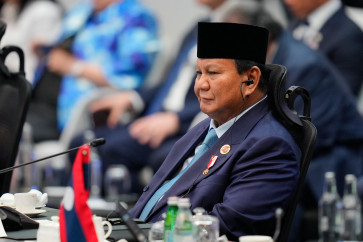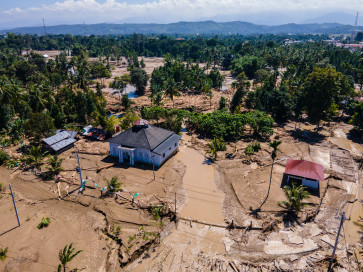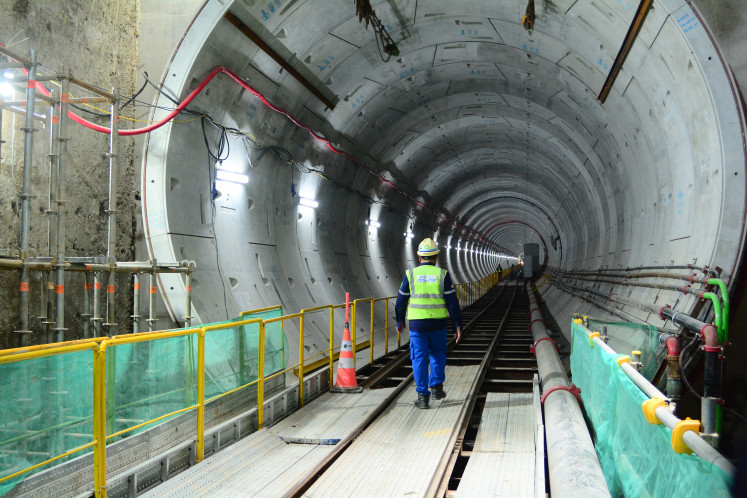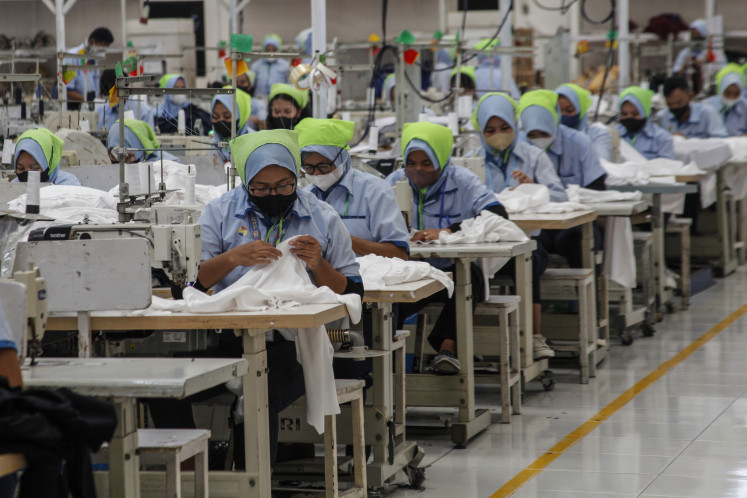Popular Reads
Top Results
Can't find what you're looking for?
View all search resultsPopular Reads
Top Results
Can't find what you're looking for?
View all search resultsGeothermal: Challenges to keep the development on track
There is great hope that Indonesia could employ its geothermal plan to reduce the countryâs emission of greenhouse gases (GHG), while at the same time meeting demand for electricity in certain areas of the nation
Change text size
Gift Premium Articles
to Anyone
T
here is great hope that Indonesia could employ its geothermal plan to reduce the country's emission of greenhouse gases (GHG), while at the same time meeting demand for electricity in certain areas of the nation. The archipelago-volcanic country is estimated to have 29 giga-watts (GW) of geothermal reserves that correspond to 40 percent of the world's reserves.
The reserves are distributed in 276 locations, while most of the largest are located in Java and Sumatra, which have the largest demand for electricity.
So far, however, Indonesia has not utilized its geothermal potential adequately. Even though the nation ranks third in the world for geothermal power plant (GPP) capacity, the current figure of 1,341 MW is significantly lower compared to several plans that have been published targeting additional GPP capacity.
Electricity generated by geothermal energy has a number of advantages over fossil fuels, especially for its renewable nature and low greenhouse gas emission.
Geothermal power might serve as a base-load, which is not subject to intermittency and variability associated with most renewable electricity sources. In addition, geothermal price is stable making it a nature hedge against the volatility of fossil fuel prices, oil in particular.
The government of Indonesia actually recognizes its geothermal potential and has made attempts to develop them. In 1983, the first GPP started producing electricity (Kamojang, West Java: 30 MW). Then, several other GPPs (Salak, Lahendong, etc.) followed.
The success of geothermal power development in the early period (1980es-1990es) could be attributed to the existence of the Presidential Decrees (PDs), strong commitment of state-owned enterprises, availability of foreign assistances (from New Zealand, for instance) and the long-known country's geothermal prospects.
PD No. 16/1974 instructed Pertamina (the state oil and gas enterprise) to enter geothermal exploration. The 1974 decree was then followed by PD 22/1981 that instructed PLN (the state electricity enterprise) and Pertamina to develop Indonesia's GPP. The two state enterprises worked closely to deliver GPP, not only in the Kamojang project but also in other GPPs.
In 2003, the government issued Law No. 27/2003 on geothermal power. The new law incorporates the spirit of regional autonomy, for instance, it changed the authority of granting geothermal working areas from Pertamina to the governments (which are central, provincial and local governments).
In 2004, following the publishing of Law 27/2003, the government announced the Road Map for Geothermal Development targeting 9,500 MW installed capacity to be achieved by 2025.
In 1997/98 Indonesia experienced economic crises that changed the landscape of development,
including geothermal power.
The economic crises had also triggered major political reforms, then the mushrooming of new laws on regional autonomy, forestry, oil and gas, electricity, the state-owned enterprises, environment, business competition, etc.
It is clear that the existing installed capacity of GPP in Indonesia lags behind its plan, moreover to its potential. Challenges of meeting the geothermal development target are larger compared to the early period. It is a question whether the target of GPP capacity under the 2004 Road Map or under the Middle Term Development Planning 2009-2014 could be achieved.
The answer is not easy. Surely, a lot of work needs to be done to keep the target of additional GPP capacity to be delivered in time.
Lack of experiences and qualified staff makes the local/provincial governments job difficult in granting a proper geothermal working area. Tender documents and processes are not meeting international standard, many of them fail to attract potential bidders.
Many geothermal working areas (the existing and being offered) are in conflict or in long dispute with other surface owner/ruler such as forestry, plantation, or the holder of other mining permits.
The two state-owned enterprises (Pertamina and PLN) are no longer working closely to deliver GPP as their shared goal; rather, they work more for their own profits as guided by laws on state enterprises.
In this 'monophonic' market where PLN plays as the only buyer, PLN's position is very strong in dictating the price of electricity produced by GPP.
In the central government, there are agencies working on geothermal issues; however it is not clear which agency is now responsible for the success of geothermal projects as a whole (from the grant of working areas to construction of GPP and delivery of electricity).
Even though the challenges for geothermal energy in Indonesia are getting larger, it is not possible to step back. The development should continue to take place and meet the development target.
The development of GPP along its cycle (from field exploration to delivery of electricity) now has to comply with several new laws and regulation.
The government has to develop a more detailed and clearer matrix of challenges, risks and their mitigations associate with geothermal project cycle.
Working areas to be offered by each licensing agency (government office either the central, provincial, or local one) have to be in 'clean and clear' status, thus reducing risks associated with exploration/exploitation. In preparing the working area, the respected licensing agency should carry out a strategic environment assessment (SEA) first, thus guaranteeing that the candidate of working area is in 'clean and clear' geologically or free from potential conflict with other surface owner/ruler, such as forestry and plantation.
In addition, more effort needs to be put by the government in speeding up to make the Power Purchase Agreement (PPA) by the private steam/electricity seller and PLN as the sole off taker of the electricity produced by GPP.
The current PPA practices need to be detailed to include, for example which party should be responsible to develop transmission lines coming out of the GPP, and when/how much the government might subsidy parties in the PPA.
In reducing risk of exploration, the government might develop further its concept of exploration by adding the scope and amount of the funds. In addition, a long term financing facility might be developed by the government through special geothermal development funds, taking the unique characteristic of geothermal development compared to fossil fuel electricity plants that use oil, natural, or coal.
Lastly, targeting additional capacity of GPP is about creating demand for engineers, experts, government officers having knowledge on the geothermal industry.
Therefore, increasing the capacity of institutions having responsibility to develop geothermal ' especially in the local/provincial governments ' is still an important job to be carried out.
The writer is senior energy planner with National Development Planning Agency (BAPPENAS). The views expressed are personal.










